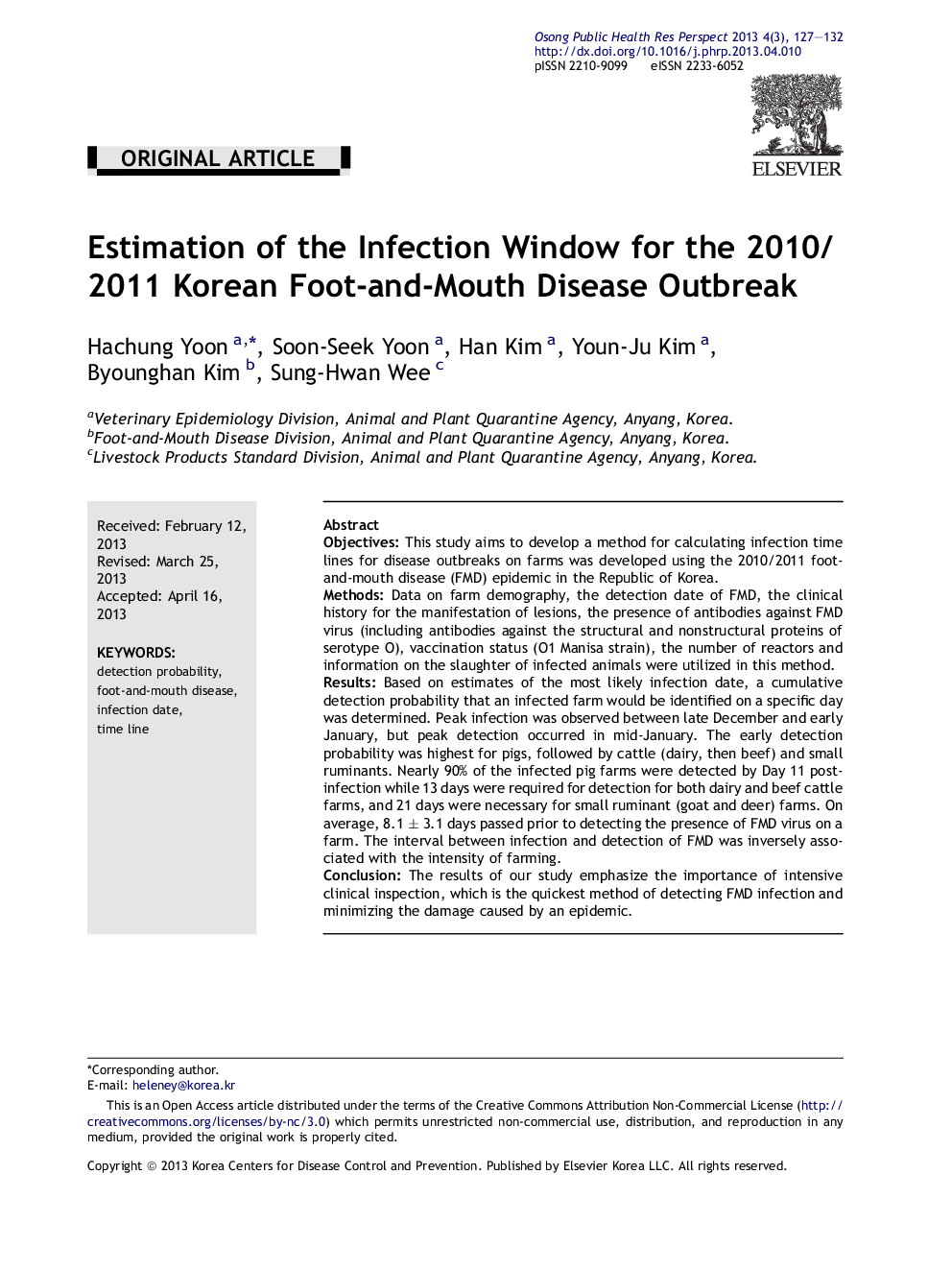| Article ID | Journal | Published Year | Pages | File Type |
|---|---|---|---|---|
| 4202066 | Osong Public Health and Research Perspectives | 2013 | 6 Pages |
ObjectivesThis study aims to develop a method for calculating infection time lines for disease outbreaks on farms was developed using the 2010/2011 foot-and-mouth disease (FMD) epidemic in the Republic of Korea.MethodsData on farm demography, the detection date of FMD, the clinical history for the manifestation of lesions, the presence of antibodies against FMD virus (including antibodies against the structural and nonstructural proteins of serotype O), vaccination status (O1 Manisa strain), the number of reactors and information on the slaughter of infected animals were utilized in this method.ResultsBased on estimates of the most likely infection date, a cumulative detection probability that an infected farm would be identified on a specific day was determined. Peak infection was observed between late December and early January, but peak detection occurred in mid-January. The early detection probability was highest for pigs, followed by cattle (dairy, then beef) and small ruminants. Nearly 90% of the infected pig farms were detected by Day 11 post-infection while 13 days were required for detection for both dairy and beef cattle farms, and 21 days were necessary for small ruminant (goat and deer) farms. On average, 8.1 ± 3.1 days passed prior to detecting the presence of FMD virus on a farm. The interval between infection and detection of FMD was inversely associated with the intensity of farming.ConclusionThe results of our study emphasize the importance of intensive clinical inspection, which is the quickest method of detecting FMD infection and minimizing the damage caused by an epidemic.
